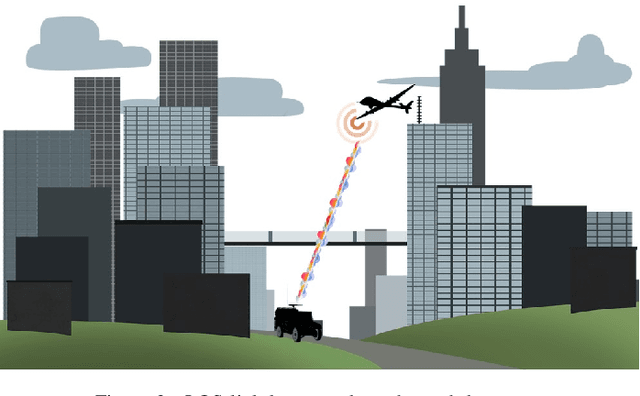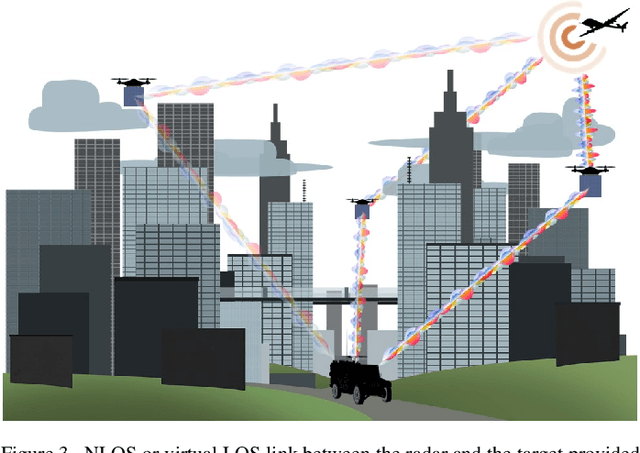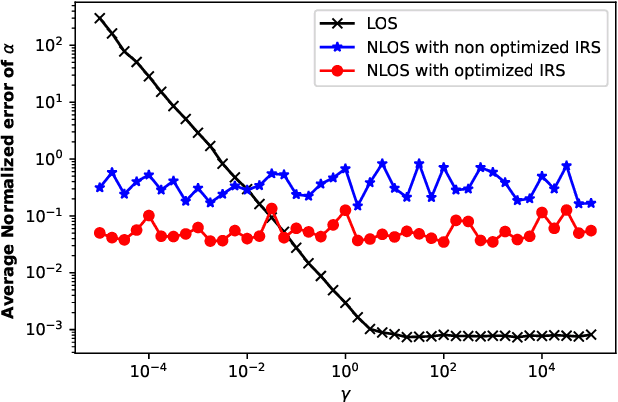IRS-Aided Radar: Enhanced Target Parameter Estimation via Intelligent Reflecting Surfaces
Paper and Code
Oct 25, 2021



The intelligent reflecting surface (IRS) technology has recently attracted a lot of interest in wireless communications research. An IRS consists of passive reflective elements capable of tuning the phase, amplitude, frequency and polarization of the impinging waveforms. Given such desirable properties, the wireless channel characteristics can be controlled and optimized for specific signal design and processing needs -- thus promising significant potential in radar applications. In this paper, we establish the theoretical foundations for introducing IRS into a radar system and study the potential to improve target parameter estimation. More specifically, we will investigate the deployment of IRS in cases where the line-of-sight (LOS) link is weak or blocked by obstructions. We demonstrate that the IRS can provide a virtual or non-line-of-sight (NLOS) link between the radar and target leading to an enhanced radar performance. The effectiveness of such an IRS-provided virtual link in estimating the moving target parameters is illustrated under both optimized and non-optimized IRS scenarios. Numerical simulations indicate that the IRS can enhance the target parameter estimation when the LOS link is weaker than $\sim 10^{-1}$ in relative strength in comparison with the NLOS link.
 Add to Chrome
Add to Chrome Add to Firefox
Add to Firefox Add to Edge
Add to Edge